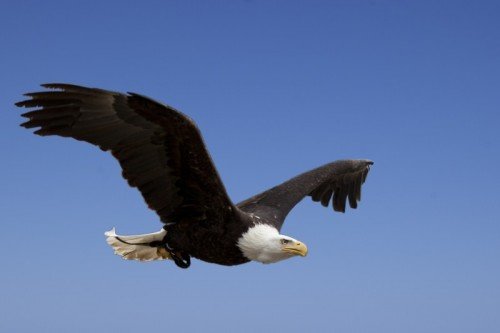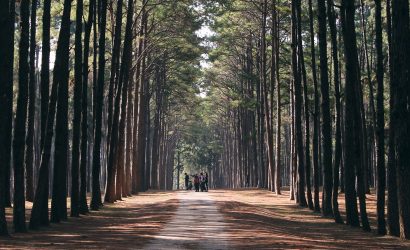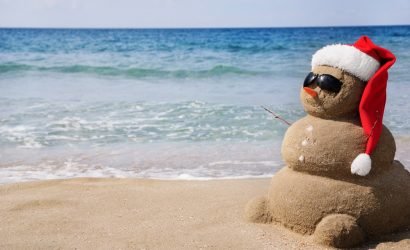On a recent, seemingly ordinary day on the Eastern Shore, one member of the ShoreBread team was driving their usual route around Salisbury’s City Park when they caught site of a particularly large brown bird with a white head and tail flying at no great distance above the street. She did a double take as she watched with eyes glued and jaw dropped as the bird swept gracefully in front of the windshield. Another sighting occurred on a drive over the Nanticoke River. While trying to not be distracted by the panoramic wetland scenery, we practically drove off the bridge after catching sight of another large, winged bird with similar features. We concluded that this mysterious falcon must be none other than our National Bird, the bald eagle. With recent news of an increase in snowy owl sightings, we decided to investigate another bird of prey that frequents our shores – the bald eagle.
The American bald eagle, also known as Haliaeetus leucocephalus, is a carnivorous bird with a wing span up to 85 inches and a weight of ten to fourteen pounds. The female bald eagle is larger than the male, usually maturing with a body length that outstretches the male by roughly three inches. There is also a northern species of bald eagle that is also a few inches larger than its southern relative. (Fun Fact: This raptor was dubbed “bald” because of the outdated word associated with whiteness, not because the bird was in need of a toupee.)
Bald eagles love living on the Eastern Shore, just as we do, because they are considered to be sea or fish eagles. Bald eagles will perch on trees above one of the many bodies of water on the Eastern Shore and catch fish, which make up the majority of their diet. Eagles will also build nests close to waterways for convenience when feeding their young. However, bald eagles do not survive on seafood alone, they will occasionally consume small squirrels or chickens also…just another reason they call the Eastern Shore home.
Bald eagles also inhabit many other regions of North America including Canada and Mexico. The largest population of bald eagles can be found in Alaska where they are said to thrive in large part due to the salmon population. Our nation’s bird is also found in states such as Florida and Louisiana.
Although bald eagles are a beautiful part of the Eastern Shore’s wildlife, they were once in danger of disappearing. Since Europeans first stepped foot on American shores, competition for food and habitat with the bald eagle has ensued. Over time, eagles not only faced limited resources but were also threatened by overhunting. In 1940, The Bald Eagle Act was passed allowing for the eagles populations to regrow.
However these birds of prey soon faced another silent killer. Many pesticides, such as DDT, began entering waterways through runoff, eventually finding its way into eagles’ bodies through ingesting fish. Because eagles are the main predators in their food chain, they end up with a large amount of toxins in their diet. More specifically, toxins cause eagles’ egg shells to become thin and break during incubation, causing the death of many young eaglets.
Fortunately, awareness spread and our National Bird was put on most states’ Endangered Species lists. Richard Nixon officially created the Endangered Species Act in 1973, allowing for the preservation of many animals including the bald eagle. Signs of improvement for the bald eagles were seen in 1995 when they were classified as threated species, rather than an endangered species. On June 28, 2007 the eagle’s recovery became official as the Department of Interior took the American bald eagle off the Federal List of Endangered and Threatened.
Other interesting facts about this great bird include that it has around 7,000 feathers covering its body. It is also a federal crime to keep an eagle feather. If one is found on the ground, they must be turned into the proper authorities. Eagles’ feathers also start out completely brown; bald eagles do not grow white feathers until they are at least five years old. Many people do not realize that eagles do not have vocal cords; rather, they make high pitched noises using their syrinx, a bony chamber located where the trachea divides to go to the lungs. These amazing creatures can live up to 30 years, mate for life, and although their eyes are the same size as humans’, they have four times better eyesight than us.
ShoreBread hopes to see more of our feathery friend-of-flight and can’t wait for our next sighting. And since we are always up for a nature walk, we also plan to take a hike to Black Water National Wildlife Refuge to join their eagle survey on January 8. Hope to see you there!








